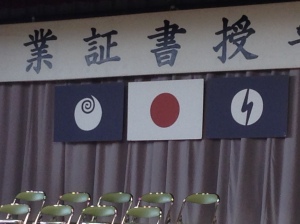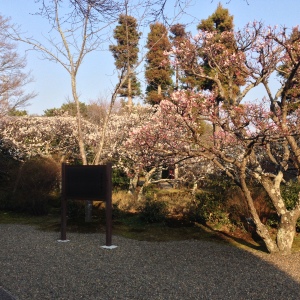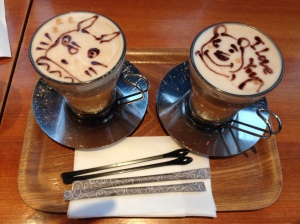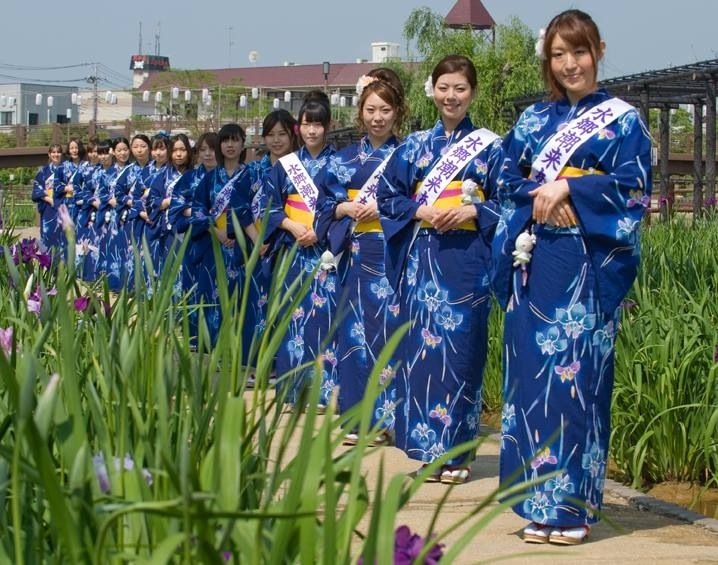Right now my life is going through a period of renewal. In March, my third years graduated from both Hinode Junior High School and Itako 2nd Junior High School, and next month a whole new set of first years entered the halls. Sakura flowers were blooming, announcing the arrival of spring. They came and went so fast that I feel like I didn’t get the chance to take enough pictures. On my Facebook newsfeed I saw that my old alma mater had its graduation this month, with the class of 2014 probably the last class I knew personally back in day. Lastly, I’m getting prepared in little ways here and there for the big move to Tokyo, arranging things so that when I’m gone my successor can take over with as minimal amount of trouble as possible.
The graduation ceremony I attended for Itako 2nd was on a Wednesday, much to my befuddlement. Usually graduations fall on Fridays or Saturdays so everyone can go out drinking afterwards to a nomikai (drinking party), but for some reason the Board of Education decided Wednesday sounded better. Since I was at Itako 2nd JHS that month, I went to their graduation and missed Hinode’s. However, I made sure that the third years at Hinode got my congratulations card in February. I made a cute little pink card with a message, a small picture of me, and stickers on it.
In Japan, graduating from junior high school means a lot to students. Unlike in the United States, students in Japan have to take rigorous tests in order to enter high school. High schools also have different levels, and if a student gets into a top level school, then odds are good that student will go on to a great college. Getting into a top level college means being able to get basically your choice in career. Students really feel pressured in their third year of junior high school to study, study, study! After they pass a test, they can relax, but until then it’s very high pressured.
Also, after graduating from junior high, there is little to no guarantee they will see some of their best friends again. Some students might see each other again on break or maybe on the weekends, but that depends on if they can manage to make the time. I don’t have any students leaving town this year (that I know of), but last year a student moved in with relatives up in Mito to go to a high school there. If parents can afford it, they may even move so their child can go to a high level high school all the way on the other side of the country. Not many parents in my area can afford such a move, but it’s not unheard of in Japan.
On Wednesday, the ceremony was very formal. Students wore their freshly pressed school uniforms, entering into the gym with heads held high, no smiles on their faces (because serious business in Japan means no smiles). The strong masks crumbled when the students started crying when their names were called out to accept their diploma. Girls cried the most because it’s expected of them, but several boys did as well.
I will admit, I cried too. I knew these students back when they were first years. The school made a slide show for the parents to see with a first year picture on the left and a current picture on the right. I made it to the songs, and then I broke when the students started singing about never forgetting the memories they made here. I wept. Me! I didn’t even cry when I broke my wrist in sophomore year of college. Other teachers were teary eyed, so I wasn’t alone. I felt really proud of the students in that moment, and I couldn’t stop.
After that, I headed off to take pictures of my students. The first year and second year students made two lines outside the school’s front entrance, making a pathway for the third years to go through in the middle. Parents were at the end of the path with cameras ready. Everyone clapped and shouted, “Omedetou! (Congratulations)” as the third years walked down the line. I took pictures of them as they walked by and received a letter from a student who I talked with regularly after lunch. I even took a picture with her and many other students.
Going home that day, I noticed the sakura trees had little, tiny sakura blossoms. The beginning of the new year finally arrived. The sakura blossoms always make me think of dogwood trees. For a split second, I thought of Kentucky and the Dogwood Trail back in Paducah. I missed picks the flowers off the trees and tossing petals into the wind. Spring in both countries makes me feel nostalgic, strangely more so than any other time of the year.
I recalled my graduation from Transylvania University. My family, once a very rigidly divided structure of Dad’s family vs. Mom’s family, actually came together for it. I felt so proud walking up to get that diploma, elated at the prospect of moving all the way to Japan in just a few months time. It’s still hard to believe that graduation was three whole years ago today. My students think they’ll have all the time in the world to discover what they want to do, but I bet the time will fly just as fast for them as it did for me.
On that note, congratulations to the Transy class of 2014! I hope wherever life’s adventures take you, the memories you gained at university bring a smile to your face (and if all goes really well, a job or graduate school).
People back home are starting their new lives left and right. My good friend, Jessica Short, recently married the love of her life, Stacey Long. I am so happy for her and so sorry I couldn’t be there. Between the move and everything else tied to it, I just couldn’t afford to go. I hope that it was as beautiful as I imagined, if not more so. I hope her new start is every bit as amazing as she dreamed it would be. My other friend, Daniel Puthawala, recently got engaged to his long time girlfriend, too. Congratulations to the both of you!
I felt revitalized by all the changes going on around me. I’ve thrown my energy into preparing for the Tokyo move, rearranging the apartment, getting organized at my desk, writing up lesson plans with explanations for how to do this game or that worksheet. I want my successor here in Itako to come into my spot with basically all the materials ready for him or her, just like Lauren did for me.
And so, congratulations to my successor, whoever you are! You’re going to love it here. I just know it.

















